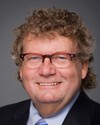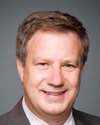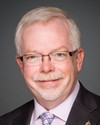There are essentially two types of technology in our business. There is what we call CNS—communication, navigation, surveillance—which is typically hardware. We don't develop those. There is a large market of suppliers and a very competitive, very good marketplace. We just compete our procurements in those areas.
The other technology is what we call an ATM system—air traffic management—which is essentially software. In that area, we are distinctively probably the only ANS in the world that develops all its own ATM software. Other ANS groups typically use these large system integrator companies and so on. That's what the government in Canada used to do before we came along. We put an end to that. We find that producing it ourselves produces a much better product—a faster and lower-cost product, and so on. Because we produce it all ourselves, we own it, and therefore we can sell it to other countries. We build the systems through integrated internal teams largely involving our engineering people, our air traffic control people, and others in the company to develop these projects from start to finish, to implementation.
Since marketing these products around the world, we are now finding that we've developed a lot of collaboration with people in other countries in our business who have unique requirements. They'll say, “Yes, we want that here, but this is London Heathrow, and we have to do things this way. Can you change your system so that it will do that?” To which we can say, “Absolutely.” The British, for instance, use our oceanic system. We had to adapt that to certain requirements they had on the European side.
We're becoming quite well known around the world as somebody who can do things and develop these products. This is really starting to develop into quite a business, which I think is great for us, great for Canada. It brings a lot of stability and in fact growing employment.




